Category: Cardinal Commitment
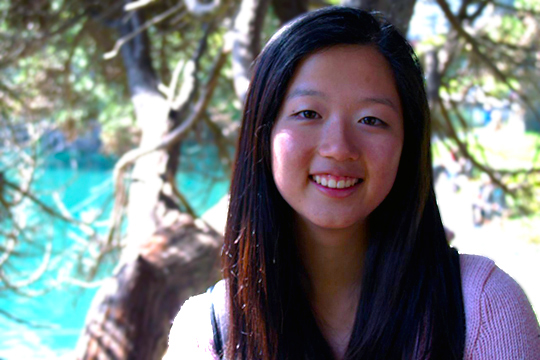
Wherever I was needed most
By Angela Li, ’17 (Biomedical Computation)
I first met Yvette* when I was assigned to be her interpreter during a routine appointment, and we talked for over an hour on our way out of the clinic. She opened up to me about her struggles with depression, and I listened as she shared her story: crippling loneliness as a recent immigrant, financial woes, an absent husband. We also connected over our shared love of Oaxaca, Mexico, her hometown, and at the end of our conversation, she was in better spirits, even a bit hopeful. As she thanked me profusely, I was delighted to see her genuinely smile for the first time that day.
As a Community Health Advocacy Fellow, I have had the privilege of getting to know people like Yvette while volunteering at MayView, a community health center that serves local low-income patients. During weekly shifts, I would help wherever I was needed most: as an interpreter, doing intake and vitals, or even comforting children as they were getting their blood drawn. In addition, I helped develop an online patient portal and customize it to the needs of MayView patients. This entailed not only applying the community health principles I had learned in the classroom, but also working with individual patients, teaching them how to use this tool and empowering them to proactively manage their health.
I look forward to caring and advocating for underserved patients in the future as a physician.
*Not her real name
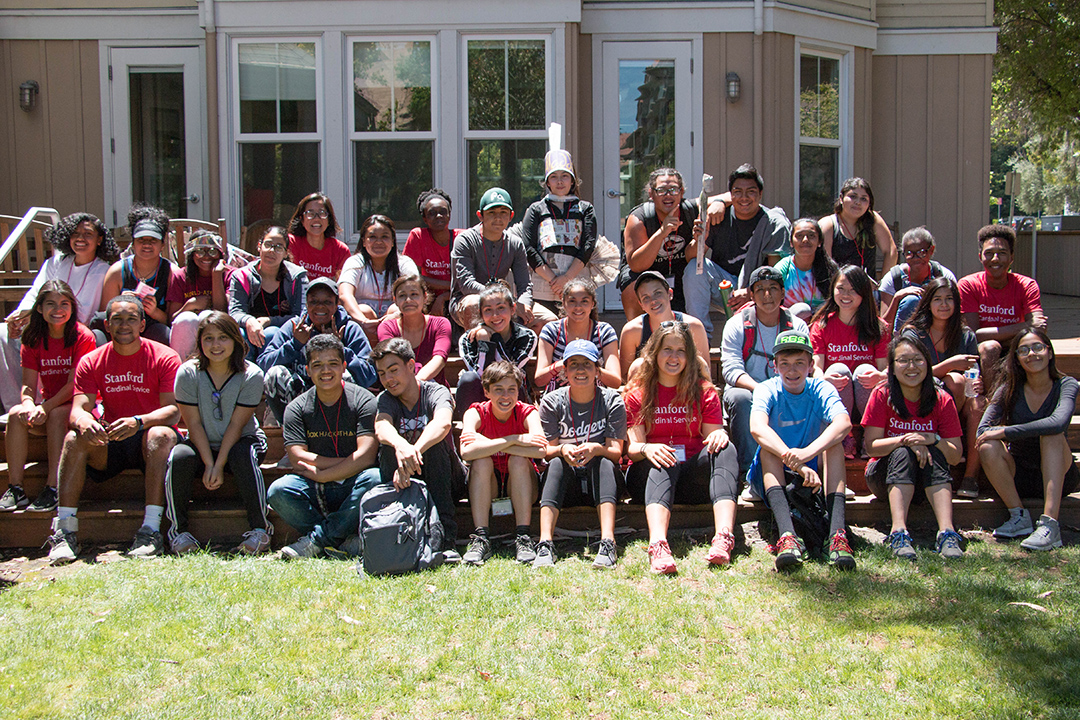
Summer Saturdays at Stanford
By Sophia Kim, program director for the High School Support Initiative at the Haas Center for Public Service
 The High School Support Initiative ran Summer Saturdays at Stanford, a new summer program for youth from the high schools that we are partnered with: Gunn, Menlo-Atherton, and Sequoia high schools. The youth served in the program are from marginalized communities locally and were identified by our partners to apply for the program. All together 27 youth participated with the support of 10 Stanford student volunteers. It was a wonderful four Saturdays of workshops on such topics as resume building and college preparation along with field trips kayaking in the Bay, to SF State, and to Huddart Park in Woodside.
The High School Support Initiative ran Summer Saturdays at Stanford, a new summer program for youth from the high schools that we are partnered with: Gunn, Menlo-Atherton, and Sequoia high schools. The youth served in the program are from marginalized communities locally and were identified by our partners to apply for the program. All together 27 youth participated with the support of 10 Stanford student volunteers. It was a wonderful four Saturdays of workshops on such topics as resume building and college preparation along with field trips kayaking in the Bay, to SF State, and to Huddart Park in Woodside.
Participants had positive feedback about the program, saying they learned a lot and valued getting to work with the Stanford students. We are planning follow up sessions during the school year to bring the youth and volunteers back together in more activities.
 Here are a few quotes from youth participants:
Here are a few quotes from youth participants:
- I really enjoyed this program, every single minute of it. This went by really fast but it definitely made this my favorite summer.
- I wanted to say this was an amazing opportunity to get to know the Stanford students! You guys are the best, you guys are truly amazing! Best wishes to the volunteers.
- I really appreciate what you guys did for us, paying for our food and providing us with your time. Thank you so much! I learned a lot!
- It was really good because it taught us a lot.
And a few quotes from Stanford student volunteers:
- I love doing volunteer work with children, outside of simply tutoring (which is important too!) Between this program and Kesem, I’ve found two great communities full of love and adventure, and have had one of the best summers.
- I didn’t realize how impactful a 4 weekend program could be. It was good that we were reasonable with how much could be done, but I also learned not to underestimate the importance of exposure to topics in college access. On the last day, I was surprised with how much the students took away from the program, especially during their mini open-mic speeches.
- I would wake up each Saturday dreading the early morning only to fall in love with the day.
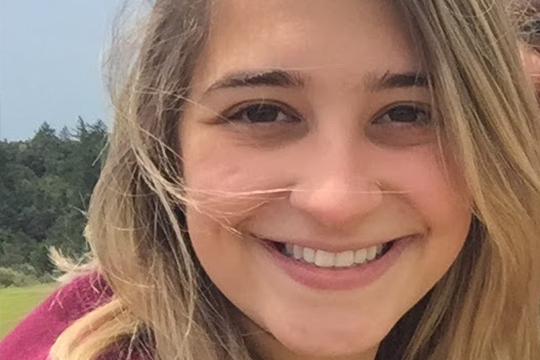
Capable
By Sophia Laurenzi, ’17 (Psychology)
At the end of the graduation lunch for the Hope House Scholars Program, a woman from Hope House thanked the teaching team for treating her without judgment and with the sense that she is capable.
Through tutoring at Hope House, a residential recovery program that women are often court-mandated to, and volunteering with The Last Mile, a start-up that teaches coding and professional skills to incarcerated individuals, I have worked with dozens of people who society sees as incapable–incapable of learning, of changing, of redemption. It has been the deepest joy of my time at Stanford to witness those involved with the criminal justice system shift from seeing themselves as incapable to capable.
The smallest moments can instill this confidence; learning a dance step in the Cardinal Service Dance in Prison course, writing a topic sentence, sharing a thought in a group discussion. These experiences have taught me that it is not ethical or even possible to try to “change” individuals in the criminal justice system. It is possible, and beautiful, to build relationships, environments, and skills that support others to tap into the universal human potential for change within themselves.
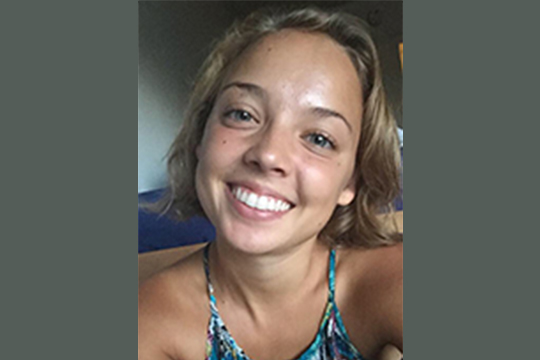
From Sequoia to Spain
By Celina Jackson, ’17 (Comparative Studies in Race and Ethnicity)
After fifth period comes to a close, I sit down with Mr. Rosario to debrief his English Support class — I volunteer there, at Sequoia High School, through the Haas Center’s High School Support Initiative. During the one hour and forty minute period I typically work with individual students, discussing their literary analyses of Richard Wright’s Black Boy and helping them pick apart the meanings of certain passages. I follow Mr. Rosario’s lead in encouraging students to find parallels between the life of the narrator – a black boy in the early 20th century south – and their own lives as mostly low-income Latinx students in the Bay Area in 2017. On the scenic drive back to Stanford along Alameda de las Pulgas, my carpool buddy and I chat about how difficult teaching is, our burning frustrations with the education system, and the inspiring moments when we connect with students or witness them realizing, “I get it.”
Over the past quarter, Mr. Rosario and his ninth graders have made my Tuesday afternoons joyful, challenging, and always energizing. The experience has been deeply rewarding for me on both a personal and a career level – I will be joining the teaching field next year on a Fulbright grant in Spain! – and I am extremely grateful for the opportunity to participate.
Celina is a student leader for the Haas Center’s High School Support Initiative, a program that allows students to work with underserved youth at local high schools.
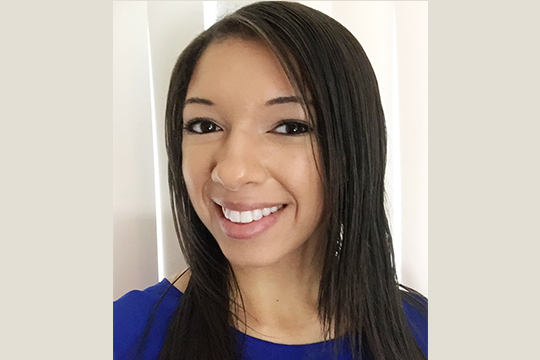
Finding the “why”
By Charlene Chambliss, ’17 (Psychology)
As soon as I mentioned that I was a Psychology major, Maria began excitedly peppering me with questions about the cultural psychology of South Korea, a culture she had come to be fascinated with through her love of K-pop and other Korean music. Time flew as I explained what I knew about how cultural norms develop differently in different societies, and I enthusiastically introduced her to many of my favorite methods for exploring a new subject online and by getting cheap used books through Amazon. When time came for me to go back to campus, I didn’t want to leave—helping empower Maria to feed her curiosity had easily been the most fulfilling thing I’d done all week.
I noticed that many of the students I worked with at Sequoia High School seemed to be “going through the motions” of their classes, following the path that they’ve been put on without a strong sense of purpose. At their age, I had often felt the same way—I had been taught to do well because it would pay off later. These students do want help with their homework, but what they really want is a reason to get excited about learning, a reason beyond “college and a good job” that speaks to their hopes and dreams for the future, and what kind of person they want to become. These youth are impressive—independent, resourceful, and willing to work hard. They’ve got a handle on the “how.” Now, all they need is their “why.”
Charlene is a student leader for the Haas Center’s High School Support Initiative, a program that allows students to work with underserved youth at local high schools.
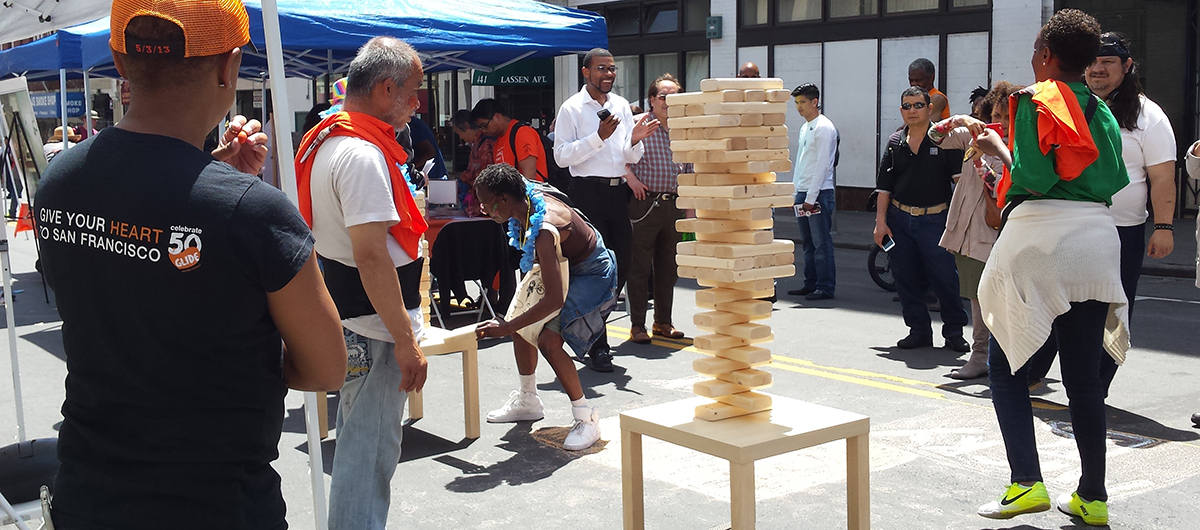
Building community and finding acceptance
Through a summer fellowship, Erica McDowell, ’16, explored service through religion, an interest that grew with her increasing involvement in community work on campus as an ethnic theme assistant at Casa Zapata and as a core member of First Generation and/or Low Income Partnership (FLIP).
By Catherine Zaw, ’15
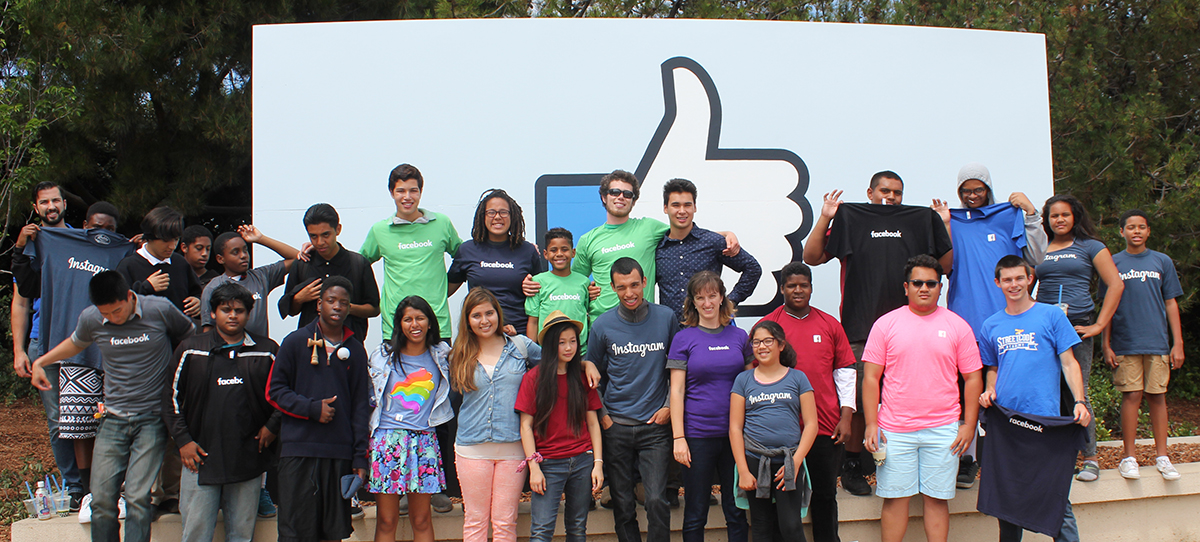
Empowering youth to achieve their dreams through technology
What if there was a summer camp where every day is like a hackathon? Rafael Cosman, ’15, teamed up with two other Stanford students to create CodeCamp, a four-week summer program for high school students in East Palo Alto.
By Van Tran, ’16
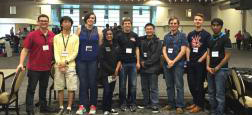
New cybersecurity group hits the ground running
By Pablo Arturo Lozano, ’18 (International Relations)
 The idea to start the student-led group Applied Cybersecurity came just before starting freshman year when a Stanford IT official came to me to talk about cybersecurity. I had just returned from doing cybersecurity and communication security in the Army Signal Corps, so naturally I jumped on board, hoping to help make Stanford students and faculty aware of both tech development and the security and defense of the systems that we now heavily rely on for day to day life.
The idea to start the student-led group Applied Cybersecurity came just before starting freshman year when a Stanford IT official came to me to talk about cybersecurity. I had just returned from doing cybersecurity and communication security in the Army Signal Corps, so naturally I jumped on board, hoping to help make Stanford students and faculty aware of both tech development and the security and defense of the systems that we now heavily rely on for day to day life.
The group now hosts regular technical and policy related workshops for Stanford grad and undergrad students. After less than 6 months the group was able to field both a cyber white hat hacking competition team and a cyber policy competition team. The hacking team placed second in the Western Regional Collegiate Cyber Defense Competition Invitational allowing them to progress to regionals where they placed fourth overall and third in “Best Defense.”
Applied Cybersecurity aims to fulfill its commitment to being all inclusive and find a way to better address cybersecurity policy issues rather than solely technical issues. We also plan to collaborate with UC Berkeley’s cyber team and continue our relationship with Stanford’s Cyber Initiative to develop even more cohesive curriculum and more accessible forums to educate team members and the general public.
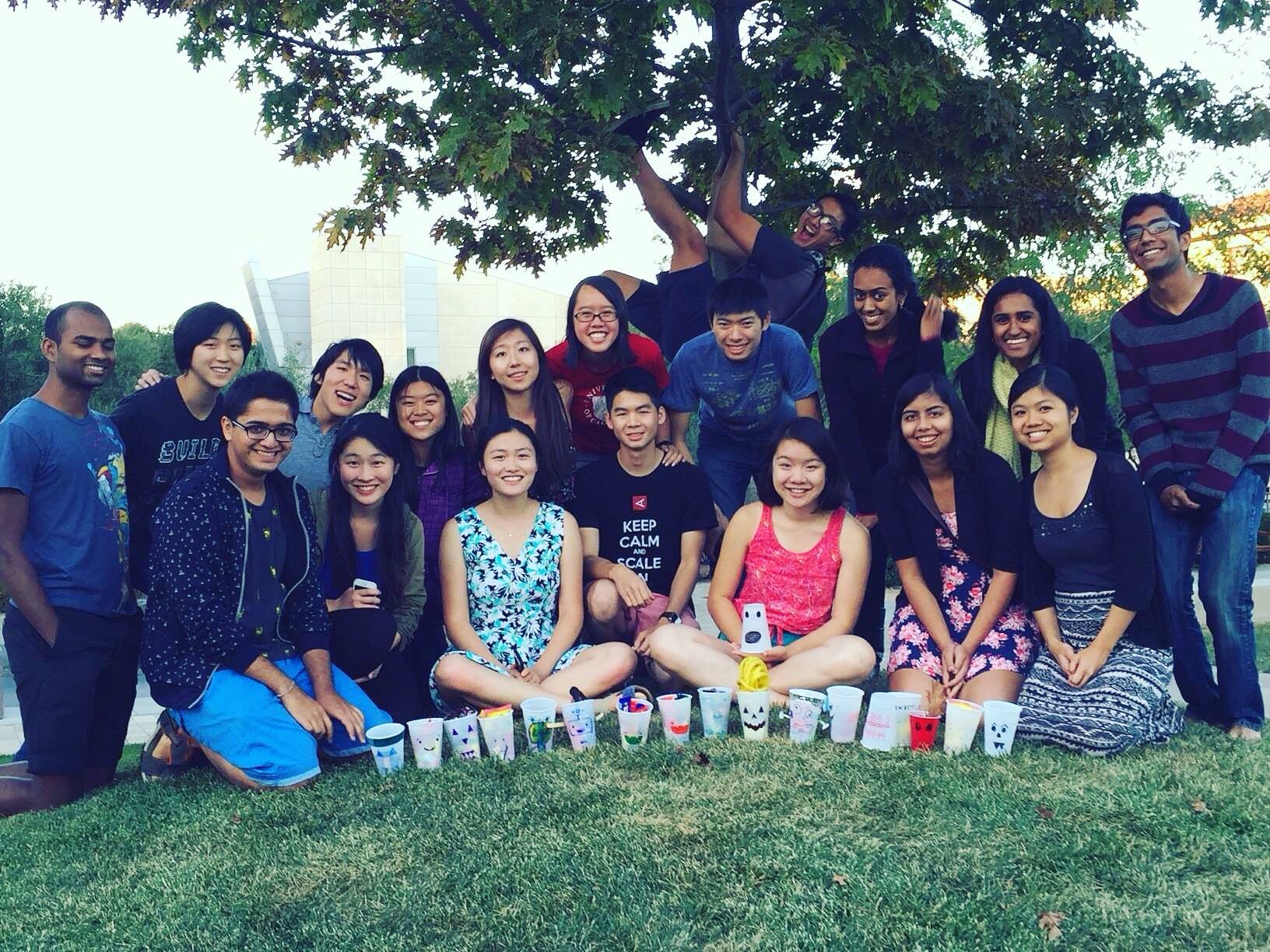
Building community with CS+Social Good
By Vicki Niu, ‘18 (Computer Science)
Coming to Stanford, I had big dreams. My conviction was to bring my passion for social change to the tech world of Silicon Valley. However, the glamour and pressure of the tech bubble slowly siphoned that conviction out of me. Over the course of fall quarter, I spent my time recruiting at big tech companies and organizing events that only helped those already advantaged by Silicon Valley’s power structure.
I was disappointed in myself, but motivated to change the culture and pressures that led me astray. Lawrence Murata, ’17; Manu Chopra, ’17; Edward Wang, ’17; and I started CS+Social Good in January 2015 to form a community that would hold each other accountable for driving technology towards social impact. We’ve organized mixers bringing hundreds of people together, a project-based class engaging students in building web technologies for social good, workshops, speaker events, and longer initiatives aimed at empowering people. The people I know from CS+Social Good inspire me every day to learn more, work harder, and discover more ways to live out social impact. I’m more excited than ever about the potential for tech to drive change, and I can’t wait to see what lies down that path.
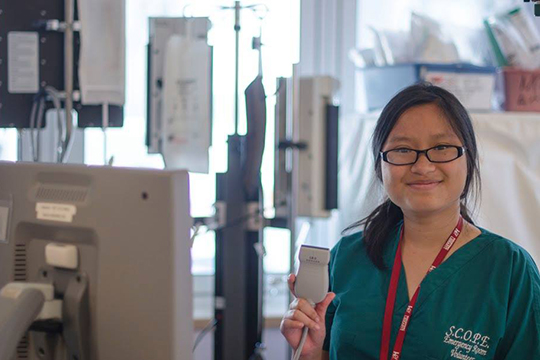
Bridging the gap between patient and provider
By Van Tran, ’16 (English)
Not many people can say they’ve had the chance to meet a survivor of human trafficking and domestic violence. I still remember the day the paramedics brought Quy* into the emergency room. Her head was tender from where it been bashed, the skin around one eye an angry red that slowly bruised purple. But what I remember most is the blank look in her eyes as the staff at Santa Clara Valley Medical Center (SCVMC) tried to figure out what language she spoke.
Our hospital doesn’t have in-house interpreters on weekend or overnight shifts. That’s where I come in as a volunteer interpreter from SCOPE, a hospital nonprofit that connects Stanford students with opportunities for public service. On some days, I’m the only Vietnamese speaker in the emergency department. By bridging linguistic and cultural barriers, I facilitate healthcare delivery for patients like Quy.
In my three years with SCOPE, I have been blessed with the opportunity to share in the experience of SCVMC patients, many of whom come from underserved communities. In the process of working with these patients to convey their story, I discover new facets of my cultural heritage and emerge reinvigorated in my dedication to public service.
*Alias used to protect patient’s privacy.
